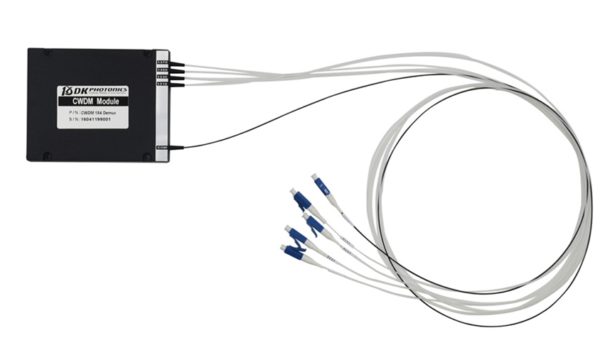When it comes to transmission and reception of the same wavelength in CWDM network, the one thing that is widely used in this industry is – bidirectional CWDM Mux/Demux. This compact device finds its extensive usage in various applications, especially in telecommunications. Often used in dual way transmission applications, its working is based on a simple principle. When there is a need to connect two dual fiber CWDM Mux/Demux, a dual fiber cable supporting the same wavelength is installed on each end of the fiber network. Even though the wavelengths of the two fibers are the same, they run in different directions of the duplex transmission.

However, there is only one fiber for expanding network capacity in some cases. In such cases, we use single fiber CWDM Mux/Demux which is quite different from the dual fiber type. Here, we will discuss what this single fiber CWDM Mux/Demux is all about.
Single Fiber CWDM Mux/Demux
The biggest difference between the appearance of dual fiber and single fiber CWDM Mux/Demux device is that the single fiber type has a simplex line port. However, some of them are also made with a duplex port in which only one port of the duplex is available for use and the other one is marked with N/A.
The main reason behind why this Mux/Demux is capable of achieving dual way transmission is that it utilizes CWDM wavelengths in a different manner as compared with the dual fiber type. While in bidirectional CWDM network each of the wavelengths runs in two opposite directions, in unidirectional CWDM network, they run in just one direction.
So, if you want to create a dual way transmission link between two different sites, you can use either one wavelength over duplex fiber with dual fiber CWDM Mux/Demux or two wavelengths over simplex fiber with single fiber CWDM Mux/Demux.
But, how do you choose a fiber optic transceiver for the single fiber type Mux/Demux? Let’s check out.
How to choose a Transceiver for Single Fiber CWDM Mux/Demux?
While selecting a fiber optic transceiver for the single fiber type, many people get confused because there are two different wavelengths on a duplex channel port. You need to make the selection based on only one thing and that is the wavelength value for Tx.
For example: If Tx value is 1290nm, you should buy a 1290nm CWDM transceiver, if Tx value is 1270nm, you should buy a 1270nm CWDM transceiver and so on. So, you can easily select a transceiver for single fiber type device without any confusion.
If you are also looking for CWDM Mux/Demux for your application, just contact a reputed manufacturer online and get the quotation today.